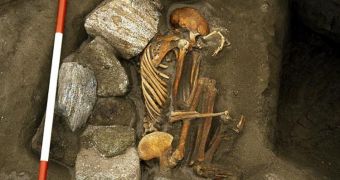A group of researchers recently argued that two bod mummies found in Scotland do not, in fact, belong to a pair of distinct individuals. The group was able to determine that the bones making up the mummies came from 6 different people, and that they were pieced together before being buried.
The team says that details of the new investigation have already been accepted for publication, and that they will appear in the August issue of the esteemed Journal of Archaeological Science. The mummies are currently estimated to be around 3,000 years old.
The monumental discovery about the nature of the bodies was made after scientists carefully analyzed isotopic data and DNA samples from the two preserved remains, one male and another female. At this point, experts have no clues as to why these two mummies were assembled in this manner.
According to archaeologists, the mummies were first discovered on the island of South Uist, at the site of a prehistoric village called Cladh Hallan. Located off the coast of Scotland, the island was most likely heavily visited millennia ago.
An interesting aspect is that studying the two bodies revealed that they were buried between 300 and 600 years after they died. Like many other skeletons dating from the distant past, these two were buried in a fetal position as well.
Another weird aspect of the finding is that the bodies appear to have been placed inside a peat bog for many years, in order for them to mummify properly. They were then exhumed, and buried again centuries later. The reason for this action will most likely never be discovered.
One of the things that immediately tipped researchers off that something is not right with the two bodies was the fact that the jaw of the female mummy did not appear to fit the rest of her skull. As such, experts proposed handling the mystery through DNA testing.
The team, featuring experts from the University of Manchester and the University of Sheffield, among others, also discovered that, while the female was composed of parts belonging to people that died around the same time as her, the male mummy contained parts from humans who died centuries apart.
A possible explanation for the creation of these “composite” mummies could be that they were put together to represent the coming together of various lineages living in that particular village, National Geographic reports.

 14 DAY TRIAL //
14 DAY TRIAL //